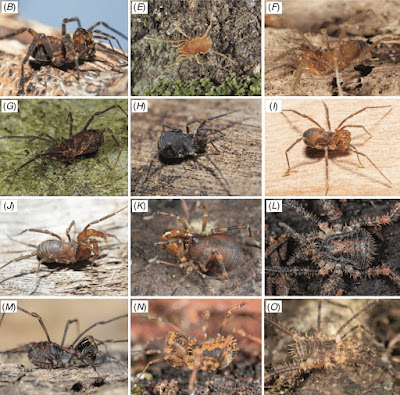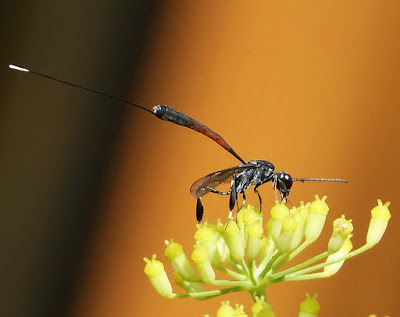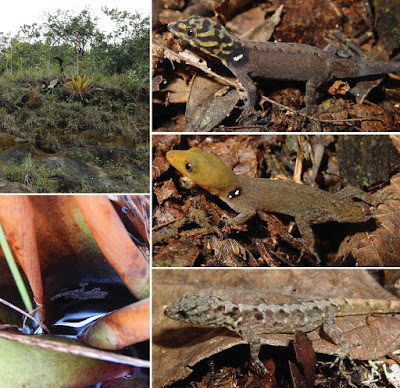[Most Recent Entries] [Calendar View]
Wednesday, February 24th, 2021
| Time | Event | ||
| 2:00a | [Arachnida • 2021] Phylogenomic Re-evaluation of Triaenonychoidea (Opiliones: Laniatores), and Systematics of Triaenonychidae, including New Families, Genera and Species
Abstract The Opiliones superfamily Triaenonychoidea currently includes two families, the monogeneric New Zealand–endemic Synthetonychiidae Forster, 1954 and Triaenonychidae Sørensen, 1886, a diverse family distributed mostly throughout the temperate Gondwanan terranes, with ~110 genera and ~500 species and subspecies currently described. Traditionally, Triaenonychidae has been divided into subfamilies diagnosed by very few morphological characters largely derived from the troublesome ‘Roewerian system’ of morphology, and classifications based on this system led to many complications. Recent research within Triaenonychoidea using morphology and traditional multilocus data has shown multiple deeply divergent lineages, non-monophyly of Triaenonychidae, and non-monophyly of subfamilies, necessitating a revision based on phylogenomic data. We used sequence capture of ultraconserved elements across 164 samples to create a 50% taxon occupancy matrix with 704 loci. Using phylogenomic and morphological examinations, we explored family-level relationships within Triaenonychoidea, including describing two new families: (1) Lomanellidae Mendes & Derkarabetian, fam. nov., consisting of Lomanella Pocock, 1903, and a newly described genus Abaddon Derkarabetian & Baker, gen. nov. with one species, A. despoliator Derkarabetian, sp. nov.; and (2) the elevation to family of Buemarinoidae Karaman, 2019, consisting of Buemarinoa Roewer, 1956, Fumontana Shear, 1977, Flavonuncia Lawrence, 1959, and a newly described genus Turonychus Derkarabetian, Prieto & Giribet, gen. nov., with one species, T. fadriquei Derkarabetian, Prieto & Giribet, sp. nov. With our dataset we also explored phylogenomic relationships within Triaenonychidae with an extensive taxon set including samples representing ~80% of the genus-level diversity. Based on our results we (1) discuss systematics of this family including the historical use of subfamilies, (2) reassess morphology in the context of our phylogeny, (3) hypothesise placement for all unsampled genera, (4) highlight lineages most in need of taxonomic revision, and (5) provide an updated species-level checklist. Aside from describing new taxa, our study provides the phylogenomic context necessary for future evolutionary and systematic research across this diverse lineage. Keywords: classification, Gondwana, Lomanellidae fam. nov., Synthetonychiidae, ultraconserved elements. Shahan Derkarabetian, Caitlin M. Baker, Marshal Hedin, Carlos E. Prieto and Gonzalo Giribet. 2021. Phylogenomic Re-evaluation of Triaenonychoidea (Opiliones : Laniatores), and Systematics of Triaenonychidae, including New Families, Genera and Species. Invertebrate Systematics. 35(2); 133-157. DOI: 10.1071/IS20047 | ||
| 2:36a | [Entomology • 2021] The Genus Gasteruption Latreille, 1796 (Hymenoptera: Gasteruptiidae) in the Czech Republic and Slovakia: Distribution, Checklist, Ecology, and Conservation Status
Abstract The genus Gasteruption (Gasteruptiidae) is represented in Europe by more than 30 species. Of these, twenty-one are recorded from the Czech Republic and Slovakia, with six being new records for the Czech Republic and eight for Slovakia. Three species are recorded as new for Bohemia (western part of the Czech Republic). Gasteruption goberti is excluded from the fauna of the Czech Republic because specimens previously identified as G. goberti belong to G. caucasicum. Four species (G. assectator, G. caucasicum, G. jaculator and G. nigritarse) are common and widespread in both countries, G. tournieri is very common but prefers warmer regions. Only G, subtile occurs predominantly in higher altitudes of mountain ranges, while the other species are usually restricted to or are more common in warmer regions. Gasteruption opacum and G. subtile are regionally extinct from the Czech Republic and G. paternum from Slovakia, with the the most recent records of these species are pre-1990. Gasteruption freyi, G. hastator and G. hungaricum are considered very endangered thermophilous species of loess walls and steppe habitats with a marked loss of occurrence records post-1990. Locally common but much rarer than in the past are G. erythrostomum and G. boreale. Due to the fact that recent determination keys are focused on other regions, a determination key for all species recorded in central Europe is presented. Keywords: Hymenoptera, Evanioidea, bees, wasps, predator-inquilins, Bohemia, Slovakia, red list Petr Bogusch. 2021. The Genus Gasteruption Latreille, 1796 (Hymenoptera: Gasteruptiidae) in the Czech Republic and Slovakia: Distribution, Checklist, Ecology, and Conservation Status. Zootaxa. 4935(1); 1-63. DOI: 10.11646/zootaxa.4935.1.1 | ||
| 10:39a | [Herpetology • 2020] Gonatodes machelae • A New Diurnal Gecko in the Genus Gonatodes (Squamata: Sphaerodactylidae) from Margarita Island, Venezuela
Abstract We describe a new species of diurnal gecko, Gonatodes machelae sp. nov., from Cerro El Copey, Margarita Island, Venezuela. The new species is distinguished from all congeners by a combination of the following characters: small size, subcaudal pattern C (1’1’’), typically three lateral scale rows on the digits, and aspects of coloration. The new species exhibits polychromatism similar to what has been described in some other species of Gonatodes. It is found in humid forests and shrublands from about 450 m to 900 m above sea level. Keywords: Reptilia, Caribbean, Gekkota, Reptilia, endemic, taxonomy Gonatodes machelae sp. nov. Etymology. The new species is dedicated by Carlos Rivero-Blanco to Machela, wife for 53 years and counting, in recognition to her support while studying different species of Gonatodes in the field, including the new species in Cerro El Copey. Carlos Rivero-Blanco and Walter E. Schargel. 2020. A New Diurnal Gecko in the Genus Gonatodes (Squamata: Sphaerodactylidae) from Margarita Island, Venezuela. Zootaxa. 4729(3); 429–439. DOI: 10.11646/zootaxa.4729.3.9 Resumen: Describimos una nueva especie de gecko diurno, Gonatodes machelae sp. nov. proveniente del Cerro El Copey, Isla de Margarita, Venezuela. La nueva especie se diferencia de todas las especies en el género por la combinación de los siguientes caracteres: tamaño pequeño, patrón subcaudal C (1’1’’), típicamente tres hileras de escamas laterales en los dígitos, y en aspectos de su coloración. La nueva especie exhibe un policromatismo similar al que ha sido descrito en algunas otras especies de Gonatodes. Se encuentra en bosques y matorrales húmedos en elevaciones desde 450 a 900 m sobre el nivel del mar. |
| << Previous Day |
2021/02/24 [Calendar] |
Next Day >> |









